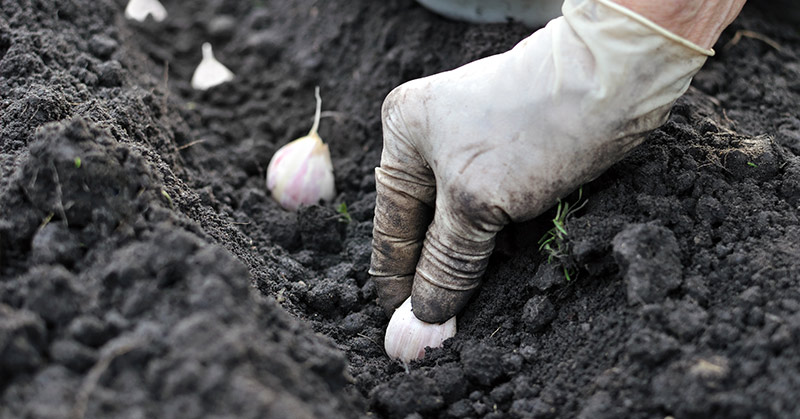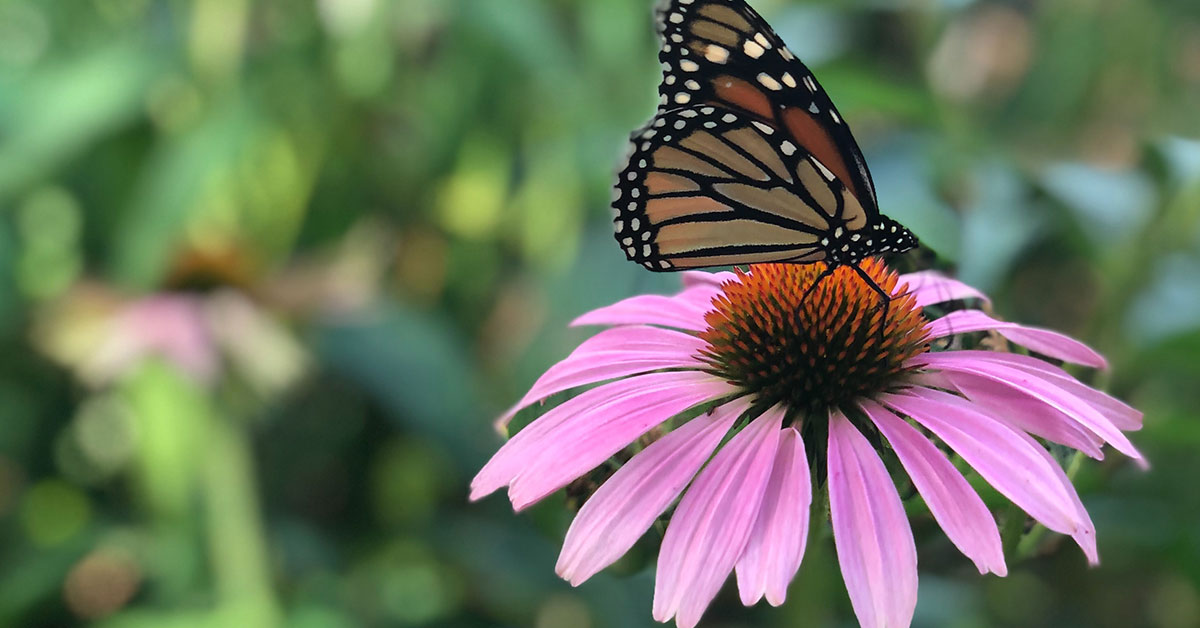Garlic, with its distinctive aroma and flavor, has held a cherished place in culinary and medicinal traditions for centuries. Beyond its widespread use in the kitchen, garlic’s remarkable health benefits and easy cultivation make it an indispensable addition to any garden. Imagine having a bountiful supply of fresh garlic year-round, ready to elevate your dishes and boost your well-being at a moment’s notice. In this comprehensive guide, we’ll unlock the secrets to growing an endless supply of garlic right in your own garden.
Whether you’re a green-thumb enthusiast or a novice gardener, join us on this journey as we delve into the simple and rewarding art of growing garlic, ensuring a constant source of this flavorful and beneficial herb for your culinary adventures and wellness pursuits. Get ready to savor the taste of success with each aromatic bulb you harvest!
How to grow garlic for an endless supply
Growing garlic for an endless supply is a rewarding and straightforward process. Follow these steps to ensure a steady and abundant harvest of garlic year after year:
- Choose the Right Garlic Variety: Select the garlic variety best suited for your climate. There are two main types: hardneck garlic, which produces scapes (flower stalks) and softneck garlic, which tends to store longer. Hardneck varieties are ideal for colder regions, while softneck varieties are better suited to milder climates.
- Prepare the Soil: Garlic thrives in well-draining soil with good fertility. Before planting, amend the soil with organic matter like compost or well-rotted manure to improve its structure and nutrient content. Avoid planting garlic in areas prone to waterlogging.
- Planting Garlic: Plant garlic cloves in the fall, typically a few weeks before the first hard frost. Separate the cloves from the bulb just before planting, ensuring each clove has its papery skin intact. Plant them with the pointed end facing up, about 2 inches deep and 4-6 inches apart in rows.
- Mulching: After planting, apply a thick layer of mulch (straw, leaves, or grass clippings) over the garlic bed to protect the cloves from freezing temperatures and to suppress weed growth.
- Watering: Throughout the growing season, garlic requires consistent moisture. Water the plants regularly, especially during dry spells, but be cautious not to overwater, as garlic does not like to sit in waterlogged soil.
- Fertilizing: Garlic benefits from a balanced fertilizer application during its growth. Apply fertilizer sparingly to avoid excess nitrogen, which can lead to larger leaves but smaller bulbs. Organic fertilizers like fish emulsion or compost tea work well.
- Remove Scapes (if growing hardneck garlic): If you’re growing hardneck garlic, you’ll notice scapes emerging from the plant. These curly stems should be removed to direct the plant’s energy to bulb development. Scapes are edible and have a mild garlic flavor, making them a delicious addition to your dishes.
- Harvesting Garlic: Harvesting time varies depending on the garlic variety and your region. Generally, garlic is ready to harvest when the lower leaves turn yellow or brown, usually in mid to late summer. Carefully dig up the bulbs using a fork, then brush off excess soil and let them dry in a well-ventilated, shady spot for a couple of weeks.
- Curing and Storage: Once the garlic bulbs are dry, trim the roots and remove any remaining dirt. Store the garlic in a cool, dry place with good air circulation. If stored properly, garlic can last several months, providing you with a continuous supply until the next planting season.
By following these steps and keeping a watchful eye on your garlic plants, you can cultivate a perpetual harvest of fresh, flavorful garlic that will enhance your culinary creations and enrich your garden year after year.
Read More: How To Grow Dill
Succession planting garlic
Succession planting garlic allows you to enjoy a continuous supply of fresh garlic throughout the year and is key to having an endless supply. By staggering the planting times, you can harvest garlic at different stages of maturity, ensuring a steady stream of this flavorful herb. Here’s how to succession plant garlic for an endless supply:
1. Determine Your Planting Schedule: Calculate the desired intervals between planting times based on your climate and the time it takes for garlic to mature. Typically, garlic takes about 8-9 months to mature, but this can vary depending on the variety and growing conditions.
2. Plant the First Crop: Begin by planting your first crop of garlic in the fall, just before the first hard frost. Follow the standard planting instructions by breaking apart garlic bulbs into individual cloves and planting them pointed end up, about 2 inches deep and 4-6 inches apart in rows.
3. Record Planting Dates: Keep a record of the planting date for your first crop. This will help you plan the subsequent plantings with appropriate intervals.
4. Plan Subsequent Plantings: Based on your planting schedule, plan for subsequent garlic plantings at regular intervals. For example, if you want to harvest garlic every two months, you may plant additional batches in late fall, early winter, and early spring.
5. Store Garlic Bulbs for Later Plantings: Before each successive planting, store the garlic bulbs in a cool, dry place with good air circulation. Avoid refrigerating them, as this can hinder their ability to sprout. A cool basement or garage works well for short-term storage.
6. Plant Subsequent Crops: As each planting date approaches, retrieve the stored garlic bulbs and plant them in the same manner as the first crop. Remember to keep the planting depth and spacing consistent for all plantings.
7. Continue Care and Maintenance: Care for each batch of garlic as it grows, ensuring consistent watering, weed control, and pest management. Pay attention to the different stages of growth for each planting.
8. Harvest and Cure: Harvest each batch of garlic when it reaches maturity. This may vary slightly between plantings due to the different planting dates. After harvesting, cure the garlic bulbs by letting them dry in a shaded, well-ventilated area for about two weeks.
9. Enjoy a Steady Supply: With proper succession planting, you’ll be able to enjoy fresh garlic throughout the year. As one batch is harvested and used, the next one will be growing and getting ready for harvest.
By implementing succession planting, you can maximize your garlic harvest and ensure a continuous supply of this versatile and delicious herb for your culinary creations and health benefits.
Read More: 12 Vegetables You Can Grow All Winter
Harvesting your garlic
Harvesting and storing garlic is a simple process, and it’s best to do it when the garlic plants have reached maturity. Here’s a step-by-step guide to harvesting and storing garlic:
- Timing: Garlic is typically ready for harvest when the lower leaves have turned brown and dried out, but there are still some green leaves at the top. This usually occurs in late spring or early summer, depending on when you planted the garlic.
- Digging Up Garlic: To harvest garlic, carefully loosen the soil around the base of the garlic plant using a small shovel or garden fork. Be gentle to avoid damaging the bulbs. Lift the bulbs out of the ground, keeping the foliage intact.
- Curing: After harvesting, it’s essential to cure the garlic to improve its storage life. To do this, you can either hang the plants in a well-ventilated, dry place or lay them out on a flat surface like a mesh tray or a wooden rack. Keep them out of direct sunlight. Allow the garlic to cure for about 2-3 weeks. During this time, the outer layers will dry and harden.
- Trimming: Once the garlic has cured, trim the roots and cut the dried leaves down to about an inch above the bulb. This helps to prepare the garlic for long-term storage.
- Cleaning: Brush off any excess dirt from the bulbs gently. Avoid washing the garlic as moisture can lead to rot during storage.
- Storage Options: There are a few different ways to store garlic:a. Braiding: If you have soft-neck garlic varieties, you can braid the dried leaves together to create a garlic braid. This makes for a decorative and functional way to store garlic. Hang the braids in a cool, dry place.b. Mesh Bags or Baskets: You can also store garlic in mesh bags or baskets. Ensure good ventilation to prevent mold growth.c. Brown Paper Bags: Alternatively, you can place garlic bulbs in brown paper bags, punch some holes for ventilation, and store them in a cool, dry location.
- Storage Conditions: Store the garlic in a dark, cool (ideally between 32°F to 50°F or 0°C to 10°C), and dry place. A pantry, basement, or cellar with low humidity is suitable for this purpose.
By following these steps, you can enjoy the fruits of your garlic harvest for several months, as properly cured and stored garlic can last for several months before it starts to sprout or deteriorate.
Keep Reading: What To Plant In October













